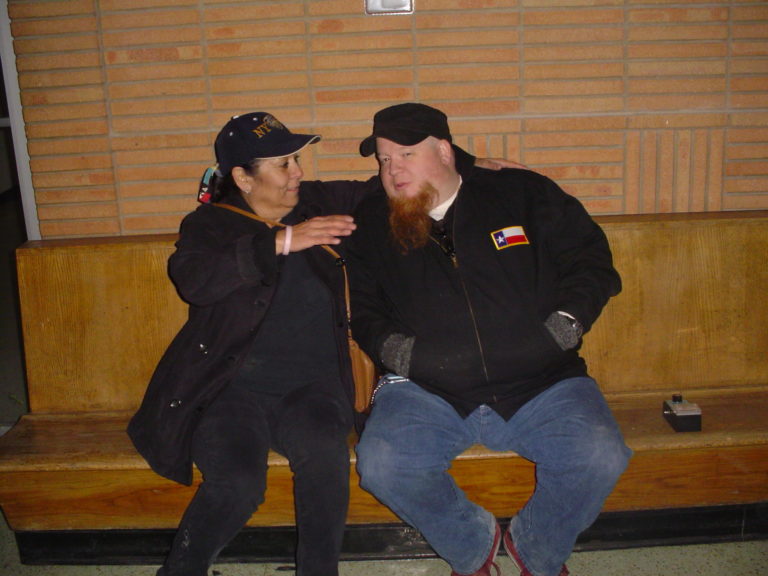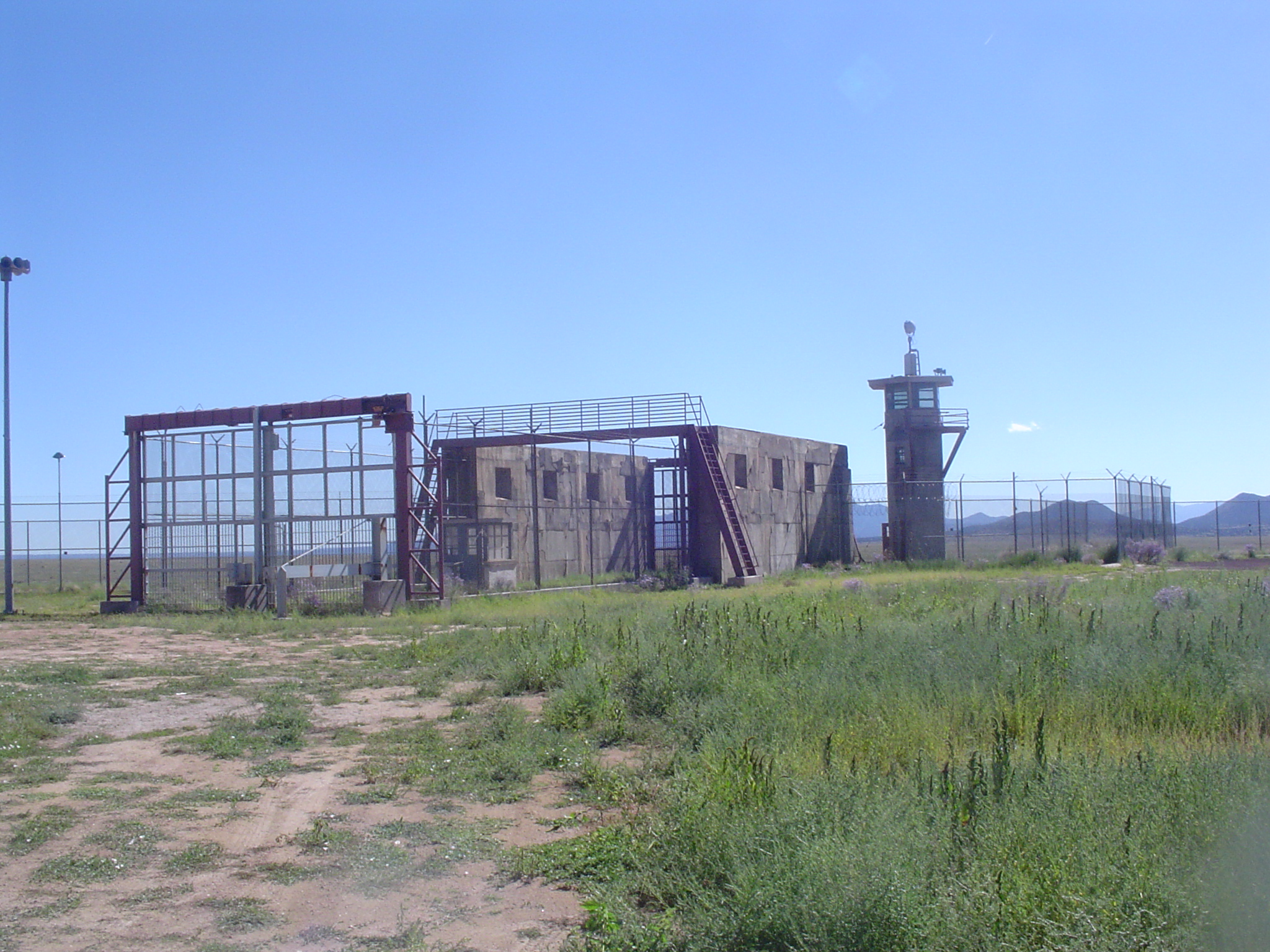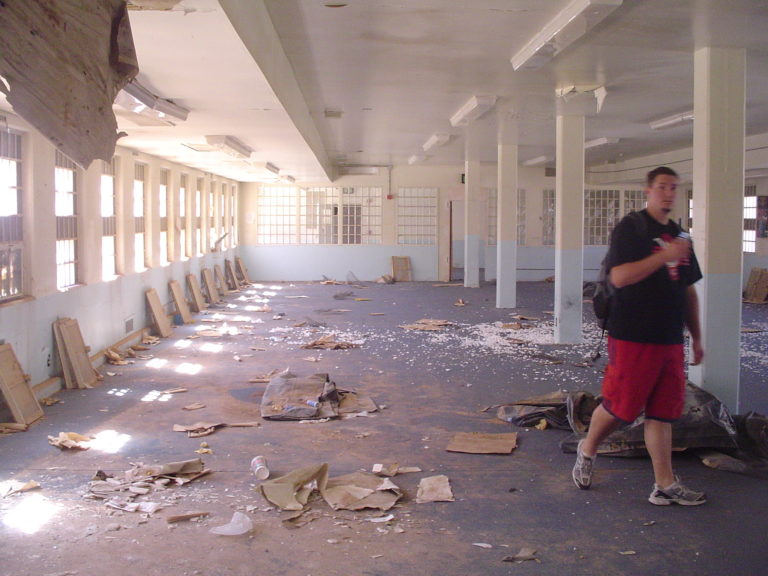We visited the prison several times in October of 2005, mostly to familiarize ourselves with the facility as we were going to be the first ones to lead tours through the pen at the end of the month. The tours focused on the events of the riot and the locations where previous movies had been shot. While people were interested in the ghost stories, we only shared the information that had been broadcasted on the radio show in 2002. On the investigative side, this knowledge was used to create new hypotheses about how noises could travel so readily through the cell blocks and what could produce the sounds that the witnesses were hearing.
We examined the acoustic properties of the main corridor in the basement and analyzed how noises made on one end of the corridor were heard on the opposite end. There was some suggestion that this could be possible cause of many of the unusual noises but we were not content with the results of the testing. If this were an explanation, we would have to know exactly where the noises originated in the first place to be able to replicate the sound. Unfortunately, the origins are still a mystery. Sound mapping is worthless. The microphones are overdriven too quickly to obtain any usable data and isolate any noises. The long corridors carried the sounds very well and created echoes.
We also made an essential contact after this visit, Marcella Armijo. She would be very helpful in the investigations that would follow. An article written for the Albuquerque Journal describes who she is and what her role in the penitentiary was.
” She has kept the photos in a black leather binder for 33 years, though there have been times, many times, when she has asked herself why she still holds onto them.
“But then I tell myself, ‘They are history,’ ” Marcella Armijo says. “Terrible history.”
Not many have seen the photos. Not many want to. They are disturbing photos, taken Feb. 3, 1980, hours after the worst prison riot in New Mexico history came to an inglorious end, as she walked through the flooded and bloody corridors cluttered with burned and butchered body parts.
Armijo, then a corrections officer at the Penitentiary of New Mexico near Santa Fe, was one of the first to survey the prison destruction and the bodies of the 33 inmates who were killed, tortured and mutilated by fellow inmates who had run amok, drunk, drugged and evil.
The photos taken during that trip into hell are ghastly enough, but the worst ones are those that had been locked inside Armijo’s mind for years. Like so many others who were there during the 36-hour siege or saw its gruesome aftermath, Armijo silently suffered from post-traumatic stress disorder.
Unlike many others, she survived.
“I never in my wildest dreams thought I would ever need help,” says Armijo, who is 61 and has been retired for 11 years. “I was hard-core. I still think I am hard-core.”
Armijo, the hard-edged sister of former Secretary of State Stephanie Gonzales and Teatro Nuevo Mexico artistic director Salomé Martinez Lutz, began her unlikely career in 1976. For years, she fought to be given the same consideration for promotions as her male counterparts, filing a complaint with the state Human Rights Commission, which she won in 1979.
In 1985, she became the first woman in the state Department of Corrections to attain the rank of captain, a feat for which she was honored in 1995 with the Trailblazer Award by the New Mexico Commission on the Status of Women.
Armijo was a no-nonsense, no-fear supervisor who routinely confronted dangerous men as if they were naughty schoolboys.
She would have been the only woman among the 15 officers working the night shift when the riot broke out Feb. 2, 1980.
Twelve of the officers were taken hostage, some of them stripped, raped and tortured by inmates drunk on raisin jack and raging over their living conditions.
“I tell myself all the time they would have killed me just to kill me,” Armijo says.
Fate, though, stepped in.
Armijo, known for showing up for work, sometimes as early as two hours to prepare for her shift, was a rare no-show that night, a Friday, having gone out to dinner with friends and having too much to drink.
“I’ve always felt guilty about that, because I should have been there with my comrades,” she says. “But thank God I wasn’t. I’m no holy roller. I don’t go to church, but I do think somebody was helping me that night.”
When she learned of the ongoing riot the next morning, a Saturday, she raced to the penitentiary.
Her supervisor burst into tears when he saw her.
“He didn’t know I hadn’t shown up for work,” she says. “They imagined the worst.”
But for Armijo, the worst was yet to come. The riot collapsed that Sunday afternoon. Many of the surviving inmates were tired and cold, many had overdosed on narcotics stolen from the prison infirmary, many were dead or wounded, many simply had nobody else to kill.
“We didn’t take back the prison,” Armijo says. “Those inmates allowed us to go in.”
She was one of the few corrections officers sent into the prison around 3 p.m. with four Army National Guardsmen and a State Police officer, who took photos at her request.
By the time they completed their rounds of the demolished prison, darkness had fallen, two of the Guardsmen had fainted, and Armijo’s boots were covered in blood. Her bare hands were moist with the charred, putrefying flesh of an inmate’s face, burned off by a blowtorch, and her nostrils were filled with the acrid smell of death.
It’s a smell she cannot forget.
What she saw she cannot forget.
But it’s how she and her fellow corrections officers were treated – or not treated – afterward that she can most not forget.
“I’m mad because nobody helped us get through this. There should have been a debriefing, training, someone to help us process what we saw, what we experienced,” she says. “We had to deal with those bodies. Oh, God, if you see the photos, it would give you an idea of what we had to go through.”
And so I do.
She pulls out the binder and shows me black-and-white images of bodies – one with a noose around his neck and the word “RAT” carved into his chest, another with his severed head between his legs, another with his genitals hacked away, many others with many stab wounds and cigarette burns, many with terror frozen on their faces.
Not one of them was appropriate for publishing in the Journal.
Also in the binder is her handwritten list of the officers on duty that night. Nearly all of them are dead, she says.
“A lot of them were never right again,” she says. “Many of them started drinking.”
Armijo did, too, she admits. For nearly 20 years, she struggled alone with the bottle and the nightmares and the paralyzing anxiety.
But she went to work every day.
“I thought everybody was looking at me to see if I would mess up and then they wouldn’t promote other females,” she says. “I worried that they would think I was weak.”
Finally, in 1999, she sought help from a psychiatrist, who diagnosed her with PTSD. In 2001, she was granted disability benefits and retired.
She lives a quiet life now in Albuquerque, crafting beautiful, intricate folk art jewelry, many items featuring skulls and saints.
It helps calm her, she says.
I ask her how she managed all those years, how she was able to stick with the job after the riot when most could not, how she was able to fight back the demons of those days, 33 years ago this Saturday.
For a moment, the hard edge falls away, and the tears come.
“I had to prove a point,” she says.
I think she’s done that.
She closes the binder, zips it shut and with a smile returning to her face, she says: “Maybe it’s time to let go of these photos. Maybe it’s time to get rid of them.”
Marcella would join us on several investigations in 2006 and 2007. She had several issues with the current stories that were being told at the prison. The first was that many of the correctional officers had said they were working at Old Main during the riot when they were actually not even employed with the Correctional Department yet. Marcella kept a list of the employees that were actually employed at that time and could identify which ones were not around during the actual riot in 1980. As it turns out, over half of the first-hand witness accounts came from people who had not actually been present during that horrific event. Of course, this makes a significant impact on the reliability of those witnesses.

The second thing that really concerned her was the fictional accounts of the riot that were being told. Books such as the Hate Factory and the Devils Butcher Shop contained many stories that she says were merely nothing but fiction. Since some of these stories were finding their way into some of the testimony of the witnesses, it presented an additional issue with how reliable their testimony actually was.

